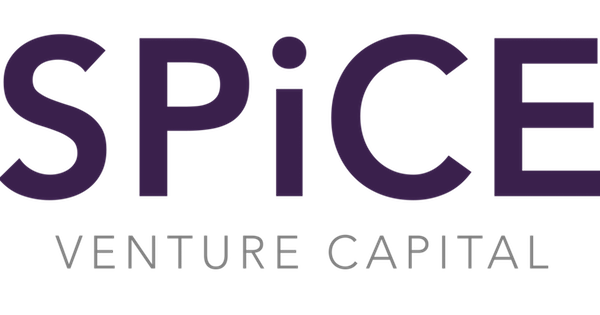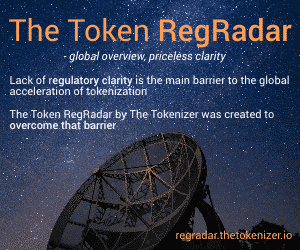An interview with Tal Elyashiv, Co-Founder and Managing Partner of SPiCE VC, Co-Founder and Board Member of Securitize, and author of the book, ‘Blockchain Prophecies’.

Tal Elyashiv is one of the true pioneers of the asset tokenization and security token industry. In 2017, SPiCE VC debuted its first fund, SPiCE I, which was the first fully tokenized VC fund ever. Whil the launch of SPiCE was an overwhelming success, it was a long journey to get to that destination. Since only minimal regulatory guidelines were around, not to mention the technology, Tal and his team had to start from scratch and build the right technology infrastructure to navigate a regulatory landscape in its early understanding of tokenization. However, this experience gave Tal a truly profound understanding of both the technical and regulatory aspects of the space, which is still today one of the significant challenges for professionals in the industry
In this interview, Tal takes us on a tour from the early days all the way into the future, talking about some of his predictions or “prophecies” for the continued development and evolution of the asset tokenization space. Tal is confident that the industry is where it should be and that 2024 is The Year of Tokenization.
1.A Pioneer’s Journey
Michael Juul Rugaard
(MJR): You play several roles in the industry, and now also as an author with the new book Blockchain Prophecies. How would you describe yourself and what you’re doing in this new industry we are lucky to be part of?
Tal Elyashiv (TE): How I describe myself is probably the toughest question. More than anything, I love getting things done, especially when I’m excited about them. In that sense, I’m a kid at heart. Throughout my career, I have been lucky enough to know when to pivot to the next “thing” that I can get excited about – and I have no intention to stop doing that.
I got exposed to blockchain late, around 2017. I was busy heads down running a startup before that, and I woke up to my next thing and started working on SPiCE VC. This was when I firstbecame aware of blockchain. Earlier, I often had CIO roles dealing with technology operations in large transactional businesses. But when I saw blockchain technology for the firsttime, I reacted strongly and said: ’Man, this is something!’ When put to proper use, blockchain could solve most of the complexity created over the last decades in all transactional industries.
Most industries that impact our lives are incredibly complex transactional industries, and I just thought, WOW! This technology can simplify and solve a lot of problems and enable things that weren’t possible before. And I started this journey with SPiCE VC focusing on Blockchain-based companies.
MJR: Okay, so SPiCE VC started before Securitize, right?
TE: We started SPiCE VC in 2017, but it took a while to figureout what the focus of the fund should be. Then we started the regulatory process, but because we were the firstVC fund to be fully tokenized, there were no regulatory oracles to turn to. We had to figre out the regulatory framework on our own. We decided to take the time and do the necessary work so it was executed flawlessly.While it took some time, our firstfund was a huge success when it officiall launched in 2018. While working on the technology for the fund, we realized that this was way too important to be buried under a VC fund. And so we spun offSecuritize as an independent entity, and the rest is history.
MJR: You were the firstto fully tokenize a VC fund. What were the reasons for doing so? Was it to increase liquidity for the investors? Was it to enable more and less wealthy investors to be part of the fund? Did you see these advantages already at that time?
TE: Yes, that’s what we saw. And having more participation has two interesting benefitsto it. One is that it’s great to increase your reach. Typical VC funds have only 10 to 20 LPs because the processes and regulatory aspects are complicated. SPiCE VC has 450 LPs, but we only need a small staffbecause the fund is tokenized. With SPiCE I, we already did two distributions of payouts back to investors, all automated with low operational costs.
We also designed SPiCE to be more inclusive for investors and blockchain technology helped us achieve that. Private equity funds or VC funds are exclusive instruments for the very wealthy and institutional investors because the minimum ticket required to participate is huge. This lucrative asset class can be democratized through tokenization – becoming available to ordinary investors that can share the same type of instruments as the large investors.

MJR: Since you launched the world’s firsttokenized fund and had to do lots of the regulatory groundwork yourself, were you asked to advise some regulatory authorities as the firstregulatory frameworks were being drawn up?
TE: The answer is yes; we have had conversations with regulatory authorities. However, most of the conversations, for instance, with the SEC, FINRA, the FCA and MAS happened through Securitize, Archax, and Investax who are directly regulated by those regulatory bodies. Conversations with regulators also occurred in other jurisdictions, like Japan, EU, and Israel.
We had many impactful conversations that influeced our vision for the fund, but also for the greater industry. Having this profound understanding is crucial for an investor. If you’re not in the ecosystem, you’ll make investment decisions that may become stupid in retrospect. So, being in the ecosystem helped us a lot with investment decisions. And it brought me to my writing as well.
2.The Year of Tokenization
MJR: Sure, that’s a nice segway – let’s talk about your writing. You published the book ‘Blockchain Prophecies’ just recently. It is based on articles you have written over the last few years, right?
TE: Yes, after years in this ecosystem, I decided to start writing about it. I have written articles about blockchain, which have been published in financial, business, and investment-related publications across the globe. I stick to what I know: leaning more towards the business perspective, and less towards the technological intricacies of the space. The purpose is to tell a real-time story about how blockchain is going on and why all this is important.
MJR: So, out of all this came the book ‘Blockchain Prophecies’, and as part of promoting the book, you also published ten predictions for 2024. They are all quite interesting, and people can check them out and see how many turn out to be true. But I want to focus on prediction number six: ”Tokenization of real-world assets and centralized institutions solutions participating in their growth will be the story of the year.” Please elaborate on this prediction and tell me why you believe 2024 will be the year of tokenization.
TE: I think so for several reasons, but let’s be clear: Tokenization of real-world assets will not only happen in 2024. These assets will continue to gain momentum over the next fiveto ten years. With that said, however, 2024 will be a big year for several reasons. First of all, tokenization adoption will shift from bottom-up to top-down growth.
Tokenizing real-world assets started with private equity. From early on, tokenization was primarily used for fund structures because they were easier to tokenize than many other assets. It also started in a very jurisdictional way and without any standards or protocols connecting differentplayers in the industry. Things were very sporadic at first,which is not conducive to an industry-wide move.
Some industry players succeeded and grew, but it was bottom-up growth, which is not sufficienfor an industry to fully flourish.Instead, you need to see a top-down adoption. That began to shift in 2022. It began with institutional players trying to simplify complex processes like securities transactions settlement management. Behind the scenes in financialinstitutions, there is a lot of manual work, a lot of auditing, and a lot of syncing. Blockchain simplifiesthis, and witnessed KKR and Hamilton Lane tokenizing funds through Securitize, and continued with asset manager Abrdn in the UK moving in the same direction. Most recently, BlackRock disclosed that it has created a fund called the BlackRock USD Institutional Digital Liquidity Fund in partnership with Securitize. Moreover, I can tell you that a slew of big-name asset managers will be tokenizing portions of their funds in 2024. There are two reasons for this: One is to extend and diversify reach, so it’s not just institutional investors. The other is to simplify transaction processing and the processes of dealing with investors. So they’re all moving in this way.
3. Remaining Challenges
MJR: Things seem to be developing in the right direction, but some challenges and barriers remain. What do you see as the main challenges?
TE: Obviously, like with any transformational technology, early-stage adoption is challenging. This tokenization domain started in a jurisdictional manner, very siloed, with many key pieces still missing from the overall tokenization puzzle. For example, no standards exist for multiple digital securities marketplaces to talk to each other. Traditional security exchanges have that, and that’s important to share products and offeringsand allow better liquidity. Of course, it will come, but when the ecosystem grows bottom up, this situation is very typical. However, with many institutional players entering the scene, things are beginning to be driven top down, which will force some of the order because they have to play on a bigger scale and answer to more stringent regulations.
They also need to be able to operate across borders, and that brings us to regulations. Securities regulations are jurisdictional and will continue to remain that way even with the emergence of blockchain. Howe- simpler and seamless in a digital landscape by orders of magnitude.
What’s most challenging in terms of regulations currently is the fact that there is no digital currency that is regulated and accepted around the world that can make digital transactions flowsimply. Additionally, many jurisdictions still don’t recognize blockchain as a sole ledger and executing transactions only onchain is, in many places, not possible today. These things need to change.
One finalobstacle in terms of regulation concerns DeFi, which is one of the next areas to be regulated. DeFi is very important for digital assets, not just for crypto. However, the current DeFi protocols will not work in the real financialworld because there is no KYC/AML, and there’s no identity attached to the transactions. That’s unacceptable. DeFi players who manage to adjust their protocols to maintain the identity and the source of the transactions throughout the transactions will survive. Those that don’t
MJR: If you look back over the years, are you satisfied with the pace of the development, or have you – as many others – felt impatience along the way?
TE: Early on, I was very impatient because when you see the future clearly, and you think, why do I even have to explain this? It’s so obvious, blockchain and tokenization will make things cheaper, simpler, faster, more compliant, and everybody wins. What’s the problem? But change takes time, especially that it involves mega institutions, regulators, legislators and investors. I think we’re where we should be. All the big players are in the game, one way or another now; it’s already happening, and the exponential curve is there, too. I’m not worried about it anymore.
Read other stories: Why Real World Asset Tokenization Is Captivating Both DeFi And TradFi
Untangled Finance Launches On-Chain Securitization Pool on Celo Blockchain
You Might also Like












